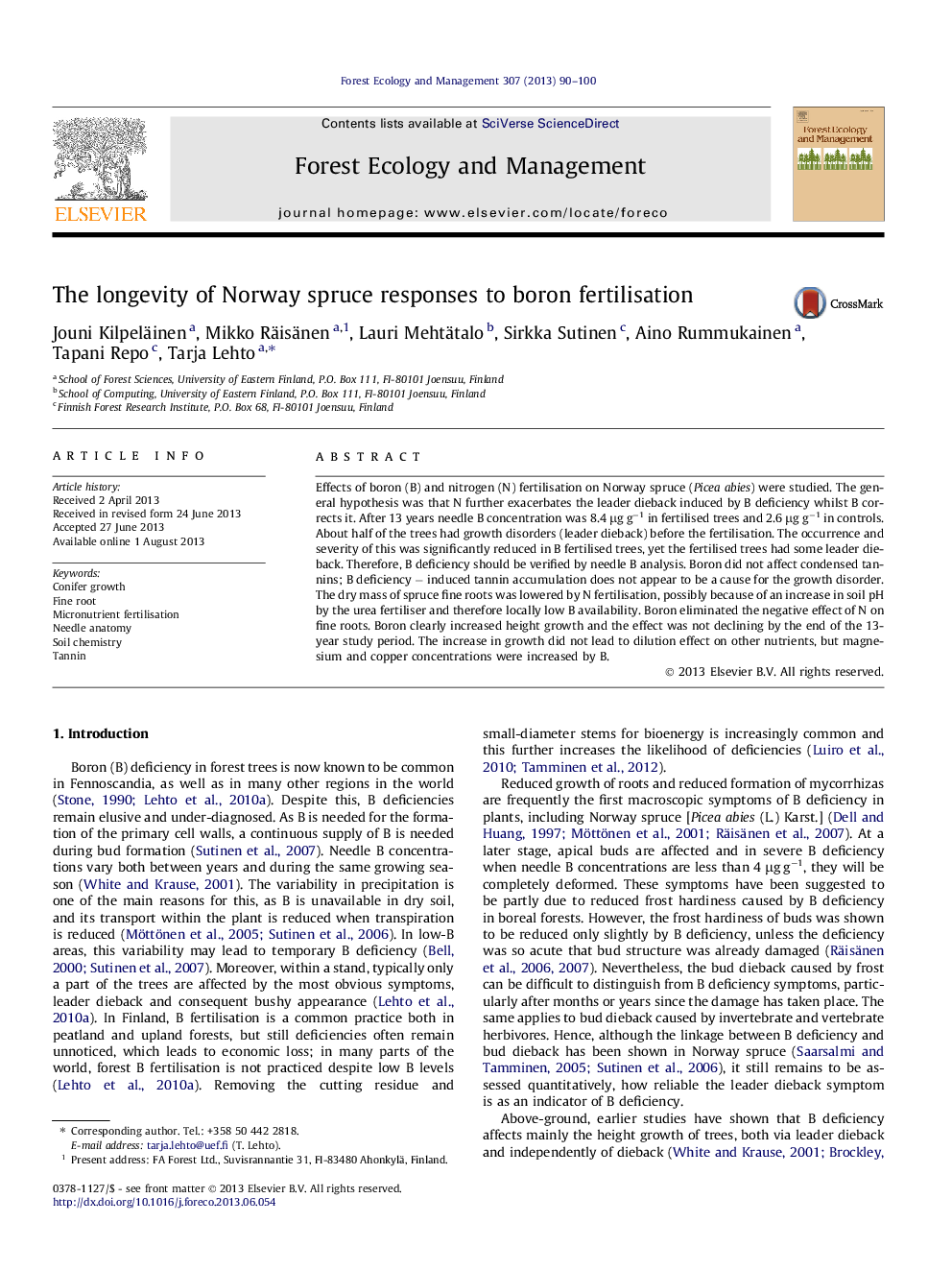| Article ID | Journal | Published Year | Pages | File Type |
|---|---|---|---|---|
| 6544028 | Forest Ecology and Management | 2013 | 11 Pages |
Abstract
Effects of boron (B) and nitrogen (N) fertilisation on Norway spruce (Picea abies) were studied. The general hypothesis was that N further exacerbates the leader dieback induced by B deficiency whilst B corrects it. After 13 years needle B concentration was 8.4 μg gâ1 in fertilised trees and 2.6 μg gâ1 in controls. About half of the trees had growth disorders (leader dieback) before the fertilisation. The occurrence and severity of this was significantly reduced in B fertilised trees, yet the fertilised trees had some leader dieback. Therefore, B deficiency should be verified by needle B analysis. Boron did not affect condensed tannins; B deficiency â induced tannin accumulation does not appear to be a cause for the growth disorder. The dry mass of spruce fine roots was lowered by N fertilisation, possibly because of an increase in soil pH by the urea fertiliser and therefore locally low B availability. Boron eliminated the negative effect of N on fine roots. Boron clearly increased height growth and the effect was not declining by the end of the 13-year study period. The increase in growth did not lead to dilution effect on other nutrients, but magnesium and copper concentrations were increased by B.
Keywords
Related Topics
Life Sciences
Agricultural and Biological Sciences
Ecology, Evolution, Behavior and Systematics
Authors
Jouni Kilpeläinen, Mikko Räisänen, Lauri Mehtätalo, Sirkka Sutinen, Aino Rummukainen, Tapani Repo, Tarja Lehto,
